All articles
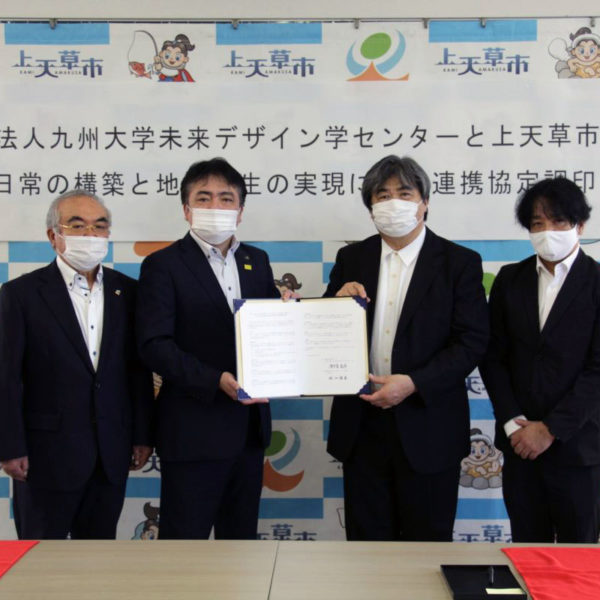
Kami Amakusa City and Kyushu University Signed an Agreement “To Build a New Everyday Life”
Center for Designed Futures of Kyushu University and Kamiamakusa City have signed a comprehensive cooperation agreement to cooperate with the aim of realizing new daily regional revitalization.Through the agreement, we will take the opportunity to develop an optical fiber network as an opportunity to build a new everyday model of Kamiamakusa City with a view to realizing Society 5.0 and SDGs through digital transformation. In the future, we will discuss and deepen the new way of life and lead to policies that contribute to regional revitalization, and promote the efforts to use the design to make the municipality a new figure.
Read More2020.8.13

SDGs Design International Awards 2020, Call for Competition
We are calling for ‘design’ that can save the world, from students all over the world who are interested in design. The SDGs Design International Awards will be held again this year to show good solutions to the world.We are soliciting creative ideas to solve social issues from students all over the world. There are things we can contribute to solving social issues! We are waiting for applications from the younger generation who are trying to solve complex social problems. Theme “Overcoming the pandemic, Design for evolution” Innovation is needed to overcome a pandemic that poses a crisis to the world. We are looking for innovative ideas to evolve future […]
Read More2020.6.10

Fusion of Various Design Areas and Advanced Engineering Areas
The Department of Industrial Art was established in 2006, as a course within the Faculty of System Design at Tokyo Metropolitan University. Currently, the Industrial Art Department consists of two cores, Media Art and Product Design (Media Creation field and Product Design field in the graduate school). We aim to integrate art, design and engineering. In this department, students will acquire the ability to find and solve problems from a multidisciplinary perspective for issues unique to Tokyo. Two special features are “12 design studios” and “collaboration with advanced engineering fields”. 12 Design Areas In this department, there are six studios under the Product Design core – Equipment and Service Design, […]
Read More2020.3.31

Design Education on Local Issues
We want to introduce the “Onomichi Regional Issues + Regional Revitalization Project”, which is one of the challenges of Design Practice II of the university design course, as it represents the characteristics of Faculty of Art and Culture, Department of Art and Design. We will share our experiences on the project content, project brief and process, end results, educational perspectives and our assessments of students. “Onomichi Regional Issues + Regional Revitalization Project” started in 2003 as an industry-academia collaboration project between the Department of Fine Arts Design Course of the Faculty of Arts and Culture and the Onomichi branch of the Hiroshima Small and Medium Enterprises Association. All the third-year […]
Read More2020.3.31

Think about Design on the South Island
The Okinawa Prefectural University of Arts, established in 1986, is the southernmost public art university in Japan, headquartered in Shuri, Naha City, Okinawa Prefecture. There are two faculties – Music and, Art and Craft (including Bachelor, Master and Doctoral program), and a Research Institute that consists of three departments. At the Faculty of Arts and Crafts and the Graduate School of Formative Art, you will learn painting, sculpture, art studies, design, and crafts (weaving, dyeing, ceramics, lacquering). The design major takes pride in the unique culture of Okinawa Prefecture, located at the southern end of Japan. We aim to nurture individuals who can understand the current issues of design, skilled […]
Read More2020.3.31
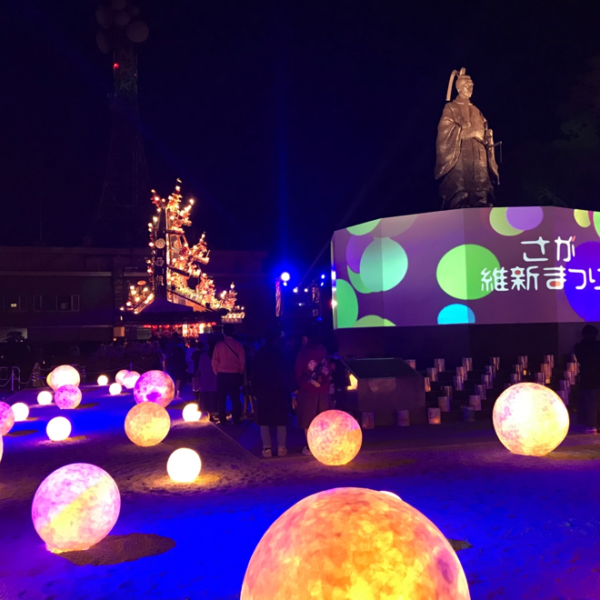
Design Education Focusing on Knowledge and Skill
This department was newly established in 2016, and its predecessor is a Special Art Department established for the training of Arts and Crafts teachers with a history of more than 60 years. The department comprised of two courses: Fine Arts and Regional Design. There are design teachers in both courses. In the 1st year, there are compulsory subjects such as the fundamental theories and practice of design, information design skills using digital tools. From the 2nd year, students can choose any of the four specialized fields classified according to the field of the teachers. Visual Communication Design We aim to develop students with a true design mind through mastering […]
Read More2020.3.31

Nurturing "Takumi" Comprising Both Problem-Solving Ability and High Technical Ability
In April 2019, Shizuoka University of Art and Culture, Faculty of Design, focuses on acquiring knowledge of traditional architecture and crafts in Japan such as history, culture, and the relationship with modern society, as well as basic skills that have been passed down. In conjunction, the Takumi Design area was established to develop students who can create new traditional architecture and crafts designs that can be adapted to modern society. “Takumi” here means traditional techniques that have been inherited by craftsmen who have excellent skills in Japanese traditional architecture and crafts. Background for the new area The traditional architecture and crafts that reflect Japanese sensibilities and aesthetics are in […]
Read More2020.3.31
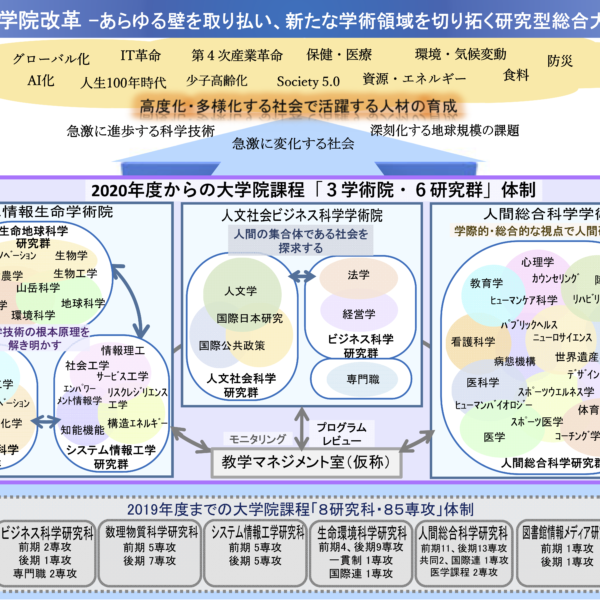
A New Degree Program Resulted from the Graduate School Reform
From 2020, the University of Tsukuba will reorganize the doctoral school to degree program system, and the Master’s and Doctoral Program in Design. The degree program allows the university to exercise mobility at its discretion and actively engage in cross-departmental education using internal resources. The degree programs are transcends the research discipline and professors can teach at up to four degree programs. This system will support transcends the organizational framework and multi disciplinal education in graduate school. We aim to develop educational methodology and provide learning opportunities from the perspective of the students through the three policies – diploma policy, curriculum policy, and admission policy and constructing the educational organization […]
Read More2020.3.31
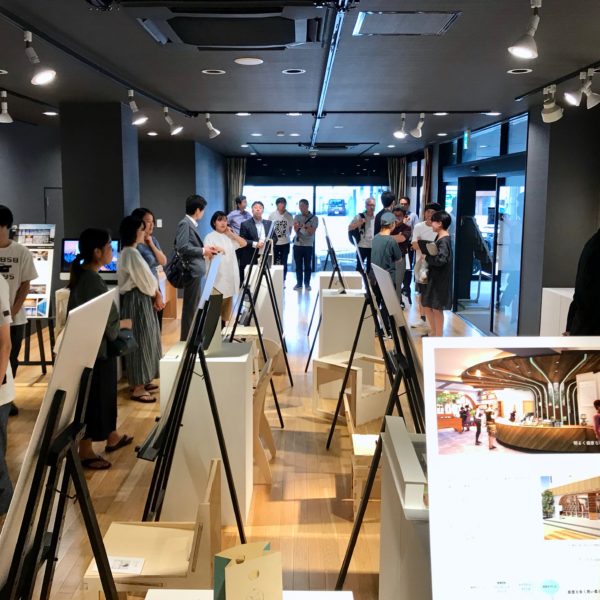
Wide, Shallow, Deep, Design Education
The educational philosophy of Kanazawa College of Art, Department of Design, Interior & Architectural Design course is to cultivate human resources who can combine various methods and expression to propose ideas beautifully. In line with the philosophy, we study and practice cross-disciplinary design education with five faculty members of different specialization, in Kanazawa, where tradition and innovation resonate. In addition to landscapes, architecture, and interiors design that are related to spatial design, the course also includes products and graphics design which is on a scale closer to humans. Hence, it is possible to learn continuously from landscape scales to packages that humans can pick up. In this course, the teachers […]
Read More2020.3.31
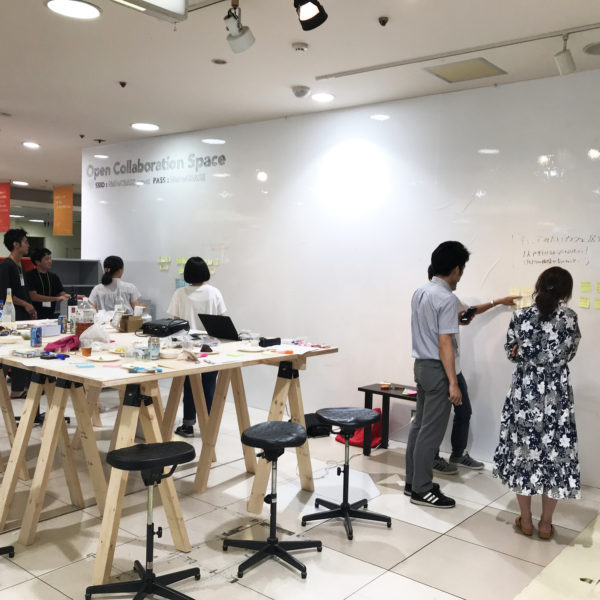
Ability for Designing x Basic Ability Necessary in Society x Ability for Creating Concepts
Nagaoka Institute of Design (NID) was established in 1994 with support of Nagaoka City and Niigata Prefecture as the first public-private institution in Japan specializing in the field of design. NID changed its status and re-started as an institution operated by the Public University Corporation under Nagaoka City from 2014, but its philosophy was never changed. Students learn to design by exploring their creativities and collaborate actively with the communities. Although the composition of departments has been adjusted few times, there is one faculty in the Undergraduate School (4 departments in different fields of study) and the Graduate School (Master’s Program/Doctoral Program). The educational goal of the institution since the […]
Read More2020.3.31
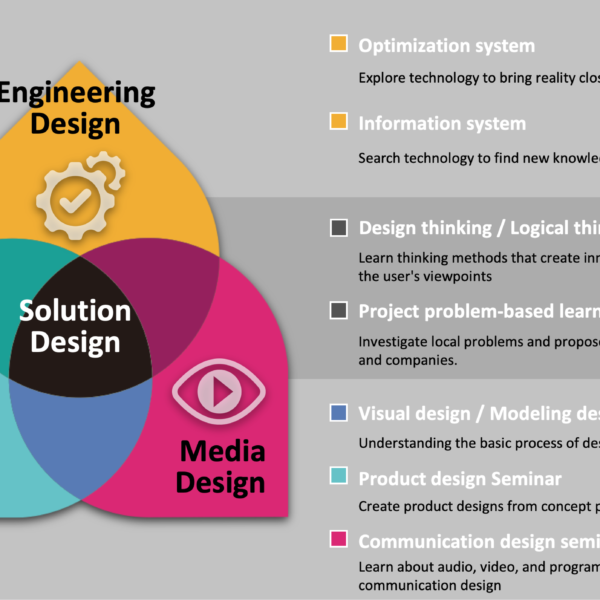
Nurturing "The Next-Generation Engineering Personnel" with High Creativity
Kagawa University, Faculty of Engineering and Design, Department of Engineering and Design cultivates next-generation engineering personnel who accurately grasp changes in the times and create innovations that fit the needs of society and people. In particular, the media and product design course aim to foster human resources who can create things of meaningful value that are creative and have social significance through a curriculum that pursues the logic required for engineering and the sensibility necessary for design and art. Practical research at four research studios with design thinking as the basis of education. ・Engineering design studio (producing features and systems based on new ideas) ・Product design studio (presenting new ways […]
Read More2020.3.31
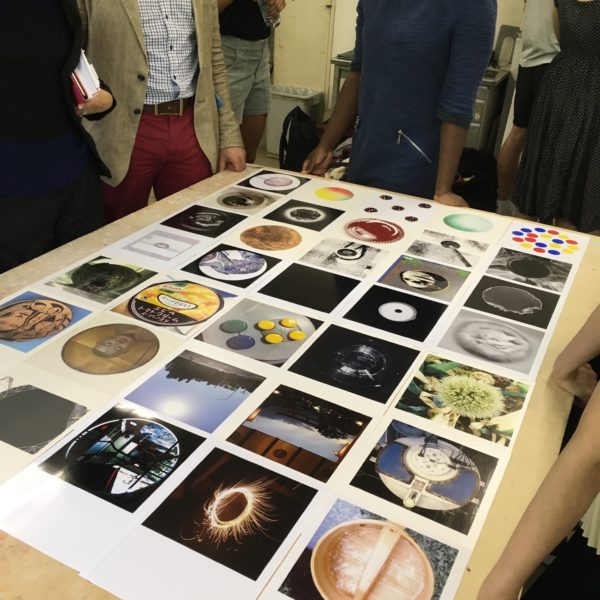
Aiming for a New Design Division in 2023
Japan’s First Public University for the Arts The Kyoto City University of Arts is the oldest university in the country as a public arts university, which originated from Kyoto Prefectural School of Painting, established in 1880. Design education began in 1939 as a design department of Kyoto City College of Painting, and in 1950, design education started as an art university. Since then, under the guidance of Felice Rix-Ueno and Professor Isaburo, design education has started in Japan, influenced by the unique Vienna studio. Since then, we have been conducting design education under the three major areas – visual design, environmental design, and product design. However, with the recent changes […]
Read More2020.3.31

Features of Akita University of Art (Faculty of Art, Department of Art)
At Akita University of Art, students take on the creation of new artistic fields unbound by preexisting concepts, in response to the needs of the modern world. We pursue the potential and commonality of art by taking advantage of the cultural resources of Akita, a land blessed by nature and rich traditions, to foster talented individuals who use their artistic sensibilities and creativity to make a difference in Japanese and global society. The entrance examination is comprehensive, not specialized according to desired major. Upon admission, students examine basic concepts of quality, perspective, ideas, research, thought processes and communication, creating a foundation for more specialized study under instructors who work on […]
Read More2020.3.31

Aim: The Intersection of "Design Engineering" and "Media Engineering"
The Division of Design and Media Technology was established in 2009. It started from the master’s program and the doctoral program at the time of establishment. Currently, after the undergraduate reorganization in 2016 and the graduate school reorganization (master’s course) in 2018, the Graduate School of Science and Engineering (doctoral course) started in 2019. All the master programs belong to one graduate school. At this university, four majors are established in the Graduate School of Science (Master’s Program), and each major has a course. For the doctoral program, three majors have been established at the Graduate School of Science and Engineering, one of which is the design and media technology […]
Read More2020.3.26

Pioneering New Relationships between Humans and Computers
Our university was founded in 2000 with the philosophy of “Open space, Open mind”. We want to develop (1) a high professional capability in Systems Information Science; (2) the ability to explore and conceptualize problems supported by research skills and associated attitudes; (3) the ability to express information through teamwork and co-creation; (4) the ability to learn autonomously and continuously (meta-learning); (5) humanity required for a specialist. The undergraduate program aims for students to acquire the ideas, knowledge, and techniques necessary to design human-centered information systems. Students learn the fundamentals of information design, cognitive psychology, programming, etc. Also, how to think and construct advanced information systems and comfortable information environments. […]
Read More2020.3.23
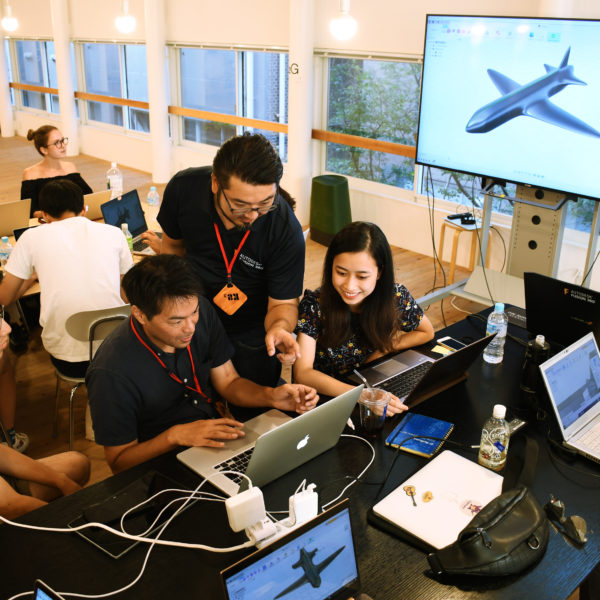
What is the Best Way to Nurture Entrepreneurship?
Kyoto Institute of Technology runs “Kyoto Startup Summer School (KS3)” as part of its design education. Organized by KYOTO Design Lab, it is Japan’s most international startup program conducted fully in English. The mission of KS3 is for students to become excited about startups, learn how to build successful startups, and take the first steps in creating a startup. Lecture on a hardware module History KS3 started in 2016 as a modest 2-day program that brought together 12 participants and 4 lecturers and workshop facilitators. The program was constructed out of different modules such as “fundraising” and “marketing for startups”. After the successful beta test, the program expanded significantly […]
Read More2020.3.20
